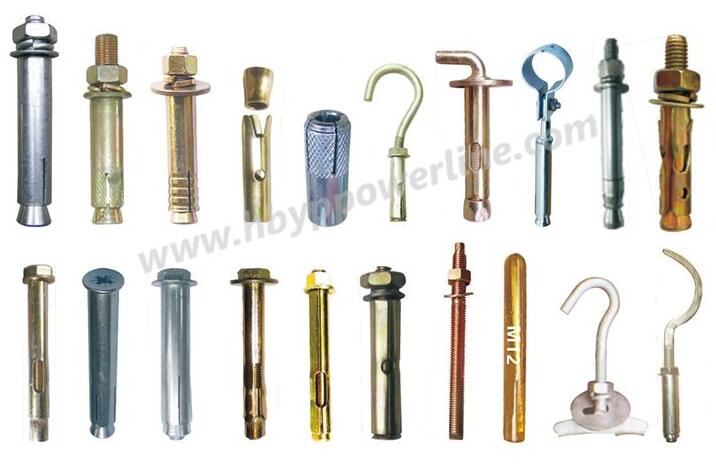What is the difference between an anchor bolt and an anchor fastener?
Anchor bolts and anchor fasteners are crucial components used in construction and engineering to secure objects to concrete or masonry. While they serve similar purposes, there are distinct differences between them in terms of design, application, and functionality.
Design and Structure:
- Anchor bolts are long, threaded rods with a nut and washer that are embedded into concrete. They usually have a hook, L-shape, or another bent end to anchor them firmly in place.
- The bent end or hook prevents the bolt from pulling out of the concrete, providing strong anchorage.
Application:
- Commonly used in heavy-duty applications where high strength and stability are required.
- Anchor bolts are typically used to secure structural elements such as columns, beams, and heavy machinery to concrete foundations.
- They are installed before the concrete is poured, allowing the bolt to be embedded directly into the concrete as it sets.
Installation:
- Requires careful placement during the construction process.
- Often used in new construction projects where the positioning of the bolts can be planned in advance.
Advantages:
- Extremely strong and reliable.
- Provides excellent stability for heavy loads and critical structural components.
Disadvantages:
- Installation requires precise planning and placement.
- Not suitable for applications where retrofitting is necessary.

Anchor Fasteners
Design and Structure:
- Anchor fasteners, also known as concrete anchors or expansion anchors, come in various designs such as wedge anchors, sleeve anchors, and drop-in anchors.
- These fasteners are typically inserted into pre-drilled holes in the concrete or masonry and expand to create a secure hold.
Application:
- Used in both light and heavy-duty applications, including securing fixtures, brackets, handrails, and other non-structural elements.
- Ideal for retrofitting and applications where installation occurs after the concrete has set.
Related links:Is Your Wiring Harness Prone to Critical Failures?
Top Tips for Choosing the Right EV Charging Cable
Exploring Aike Products: Key Applications and Benefits
Why Choose 10kV XLPE for Future Projects?
Key Considerations for Overhead Insulated Cable Purchases
Mastering the 9 Pin D-Sub Connector Pinout Guide
Are Medium Voltage Cables Future-Proof Enough?
Installation:
- Requires drilling a hole into the concrete or masonry and then inserting the anchor fastener.
- The expansion mechanism ensures a tight fit and strong hold within the drilled hole.
Advantages:
- Versatile and easy to install.
- Suitable for a wide range of applications, including retrofitting and repairs.
- Can be installed in existing concrete or masonry without requiring pre-planning.
Disadvantages:
- May not provide the same level of strength and stability as anchor bolts for extremely heavy or critical structural applications.
- The holding power can vary depending on the type of anchor fastener and the quality of the installation.
Key Differences
1. Design:
- Anchor bolts are long rods with a bent or hooked end, embedded into concrete.
- Anchor fasteners come in various expandable designs, inserted into pre-drilled holes.
2. Application:
- Anchor bolts are used for heavy-duty, structural applications.
- Anchor fasteners are versatile, used for both light and heavy-duty purposes, including retrofitting.
3. Installation:
- Anchor bolts are embedded in concrete before it sets.
- Anchor fasteners are installed in pre-drilled holes after the concrete has hardened.
4. Strength:
- Anchor bolts provide superior strength and stability for critical structural elements.
- Anchor fasteners offer reliable, but generally less robust, anchorage suitable for a wide range of applications.
Understanding these differences is crucial for selecting the appropriate anchoring solution for specific construction and engineering needs.



